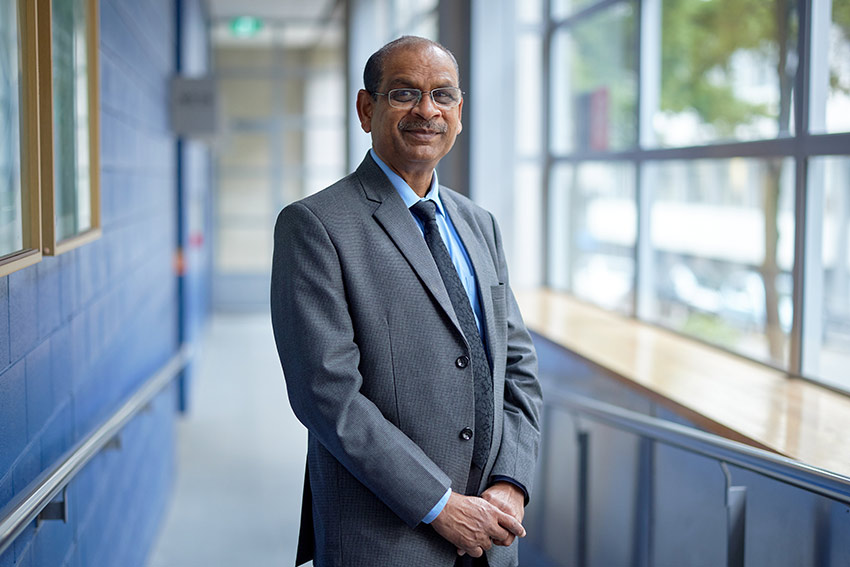Government grant for shapeshifting tech

Shape-shifting wireless transmitters may sound like science fiction, but research led by AUT’s Dr Yifan Lv and Professor Sarat Singamneni could make them a reality, thanks to a grant from the Science for Technological Innovation (SfTI) National Science Challenge.
The research project Shape-shifting meta-surface reconfigurable antennas for better wireless communication will focus on developing technology to allow wireless transmission to move beyond 5G.
At present, wireless radio waves are shuttled around by antennas on cellphone towers, with a typical 5G tower having 5-10 panels, each containing more than 200 antennas each. When sending and receiving radio waves, both the shape of the antenna and the direction it faces are important.
If antennas could change their own shape, direction and surface to receive and transmit anywhere, the next generation of wireless transmission technology – 6G and beyond - would become viable, transforming the performance potential of every wireless device, and the world as we know it.
This is where the SfTI-funded shape-shifting antennae project comes in.
The idea that a material can change its shape without being pushed, nudged, turned or externally controlled comes from 3D printing, which allows for control over composition, internal structure and even the embedding of external devices into a material.
Controlling these factors can give material shape-changing attributes, Professor Singamneni says.
“To take a simple example, we can change how porous a substance is, which will change how it reacts to moisture. Each kind of meso-structure will behave differently when moisture levels change, and we can put them together in such a way that the structure will spontaneously morph and change shape when humidity changes.
“We can do that with magnetic fields too. Imagine we create a model with wings, like a fly. We can embed magnetic material in the wings and make them flutter by changing the polarity of the magnetic fields,” he says.
“As Einstein said, the fourth dimension is time, which is why these kinds of technologies are often called 4D printing – you have a 3D shape that changes over time.”
Professor Singamneni and Dr Lv have considered a range of real-world applications for these shape-shifting possibilities beyond wireless communication.
“You could have stents inside arteries that expand and contract in response to blood pressure. There’s also a lot of potential for the field of humanoid or soft robotics, where researchers want to build a human-looking robot that doesn’t need to have a little motor everywhere there’s a muscle to make it move, such as all the minute movements a face makes in a smile.”
Professor Singamneni and Dr Lv say the antenna project will focus on electromagnetism and the mixing of conductive and nonconductive materials to make the antennas move.
Background
Shape-shifting meta-surface reconfigurable antennas for better wireless communication is one of a suite of new SfTI research projects funded to enable major Spearhead research projects to ‘end with impact’. All National Science Challenges, including SfTI, will draw to a close in June 2024 and it’s vital that every drop of potential impact from the research is delivered. In a 2022 funding round, Spearhead projects were invited to put forward ideas for research that germinated out of their work, that with more time and investment could reap impactful rewards.
Shape-shifting meta-surface reconfigurable antennas for better wireless communication project has grown out of the SfTI Spearhead project that focussed on 3D and 4D printing.
Dr Lv is an early-career researcher and will drive the project, with support from Professor Singamneni, the University of Auckland’s Dr Andrew Austin, GNS Ion Beam Material Scientist Dr Holger Fiedler, Global Lead for Mechanical Design at NAVICO Chris Hill, Global Hardware Development Manager at NAVICO Fabio Galli, Scion’s Dr Marie Joo Le Guen and University of Waikato’s Professor Kim Pickering.
The $350,000 grant is for 12 months.